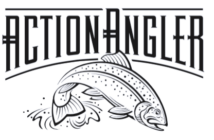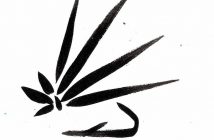From Patagonia:
Patagonia has been giving environmental grants to non-profit grassroots organizations since 1985, and to date has given out $48 million in grants and in-kind donations to environmental causes.
Specific support for fish-related advocacy efforts lies in Patagonia’s backing of the World Trout Initiative. Dedicated to the protection of native fish worldwide, World Trout was spawned by Patagonia founder/owner Yvon Chouinard and artist/activist James Prosek in 2005.
World Trout has given over half a million dollars since its inception to varied groups working worldwide on behalf of native fish.
Some background on the program:
Over-fishing and destruction of habitat threaten trout populations worldwide. Humans, are the cause, though they may also be trout’s saviors.
In 1999, on a trip to Yellowstone, James Prosek and Patagonia owner Yvon Chouinard met. Hearing the stories of James’ efforts to catch various trout around the world, and the dramatic challenges these fish are facing, Yvon was motivated to help.
The World Trout Initiative’s mission is simple: To identify the individuals and groups that protect native fish, to tell their story and to support their conservation efforts by placing money into their hands. By telling a compelling story and providing the angler and interested parties with a call to action, we felt we could make something happen.
Below, please find the groups/projects that Patagonia and the World Trout Initiative will fund this year, totaling $58,000!
Enjoy, and please let me know if you have any questions.
*****************
Trout Unlimited – Big Blackfoot Chapter
Project: Sauerkrauk Creek Fish Passage Project
The project goal is to restore a migratory corridor for westslope cutthroat and bull trout to 7 miles of Sauerkraut Creek, a tributary to the upper Blackfoot River.
Willamette Riverkeeper
Project: Protecting & Recovering the Willamette River System & Native Fish
Willamette Riverkeeper (WR) have long been stewards of the Willamette River and are currently working to ensure the Army Corp of Engineers implement the Biological Opinion for the river that will lead to the recovery of threatened native fish such as the spring Chinook and steelhead. Specifically, they are working to improve fish passage and more natural flows at several large dams in the Willamette system. Their goals include: improvements to downstream passage over dams; improvements to upstream fish passage, improvements to the control of the temperature of water that is released from the dams, and significant habitat restoration work all work toward enabling the Willamette River to function more naturally, with cold, clean water, and provide a healthy habitat for fish and wildlife.
Trout Conservancy
Project: Balkans/Neretva Campaign
This proposal centers around building public support for the protection and preservation of native wild trout populations in the Neretva River, Balkans. Their plan is to learn all they can about current and future threats to the wild native trout in the river and help coordinate strategies for protecting and preserving these fish with local people who depend on the river as well as the Balkan Trout Restoration Group.
Coastal Watershed Institute
Project: Preserving & Protecting Nearshore Olympic Peninsula
CWI promotes ecological, community based stewardship of the marine and terrestrial ecosystems along the Olympic Peninsula with a priority on the recent dam removals on the Elwha River. They have identified a set of high priorities needs to address after dam removal. Since nearshore restoration will only be partially restored the group has determined additional information is needed to understand what further actions are needed to achieve ecosystem restoration in the nearshore. Priorities include developing and implementing a nearshore restoration action plan, documenting long term fish use of the Elwha nearshore, defining the role feeder bluffs play in sediment dynamics of the Elwha nearshore, and understanding linkages between hydrodynamics and ecological function of the Elwha estuary and shorelines.
National Coalition for Marine Conservation
Project: Conserving Menhaden’s Role in the Chesapeake Bay Ecosystem.
NCMC’s mission is to build awareness of the threats to our marine fisheries and convince policy makers to restore and protect publicly owned fishery resources. Their proposal aims to amend the current Interstate Atlantic Menhaden Fishery Management Plan into a Forage Fish Plan that addresses and protects menhaden’s critical role as prey for many predatory fish, seabirds, and marine mammals. The benefits of this project could extend well beyond the Chesapeake Bay.
River Alliance of Wisconsin
Project: Wisconsin Paddlers, Hunters, & Anglers Protect Rivers from Alien Invasion.
We all know the threat of invasive species to our rivers and lakes and the River Alliance of Wisconsin is taking a hands-on, grass roots user approach to the problem. By engaging paddlers, anglers, and hunters in preventing the spread of invasive species, they are working with the very people are at times inadvertent carriers of these invasives. This project also targets small coldwater spring creeks that are host to native brook trout populations.
Bonefish & Tarpon Trust
Project: Protecting Critical Spawning Habitat for Tarpon
The goal of this project is to continue the tagging of tarpon to locate their spawning area in the Gulf of Mexico, southeastern coast of the U.S. and the Caribbean Sea. BTT will use this information to develop effective conservation and management plans for these spawning areas and in addition, will engage recreational anglers and guides in gathering information essential to protecting tarpon populations and the recreational fishery that relies on healthy tarpon populations
The Quivira Coalition
Project: Surviving Climate Change: Building resilience for the Rio Grande cutthroat trout
This is the 3rd year WT has supported The Quivira Coalition for their Comanche Creek watershed, Rio Grande cutthroat trout project. The project goals remain the same; 1. watershed assessment, 2. maintenance on existing bank stabilization and grazing enclosures,, and 3. hosting free workshops on stream restoration techniques. The Quivira Coalition does a great job of combining on the ground restoration work, documentation of the project, and involving volunteers.
Rare
Project: Protecting a Global Fishery Frontier: Salmonids in Mongolia on the Onon River
This proposal from Rare is to support NGO/Private/Public partnership conservation targeting local anglers in an effort to reduce illegal taimen fishing in the Onon River watershed in Mongolia. A key element of the campaign is to build the capacity of local stakeholders to implement and support newly established taimen conservation efforts. This is a social marketing campaign where Rare will combine conservation, outreach, and public support to achieve their conservation goals.
Snake River Fund
Project: Snake River Ambassador Program
This is a 2nd year request for their Ambassador Program which has been extremely successful documenting hard numbers on busy river days. The ambassadors are able to educate river users on proper catch and release techniques, aquatic invasives, responsible wildlife viewing, and Leave No Trace practices.
Downeast Salmon Federation
Project: Restoring the Diadromous Suite in eastern Maine
The overall goal is to advance negotiations and momentum to remove two dams and install fish passages at four other small dams. The project takes place in three coastal Maine watersheds where DSF is working to removing two dams (or tide gates) and installing fish passages at four others where the inter-connectedness of the projects and the “domino effect” of dam removal will affect the outcomes for the other sites.
Wild Fish Conservancy
Project: Fostering Stewardship: Promoting Dam Removal on Icicle Creek
This project will develop a public outreach campaign in support of the removal of three dams lower Icicle Creek operated by the US Fish and Wildlife Service. The dams block access of ESA listed bull trout and steelhead to over 30 miles of pristine spawning and rearing habitat in the upper Icicle Creek basin.



